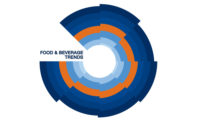Attracting Critical Hispanic Shopper Audience
With $1.3 trillion purchasing power and representing one-sixth of the U.S. population, engaging Hispanic consumers is critical to CPG success

Today, Hispanics account for one-sixth of the U.S. population, totaling 53 million people. These shoppers have increased their spending more than 200 percent since 2000, with purchasing power projected to surpass $1.7 trillion by 2017. To arm CPG marketers and retailers with critical information essential for engaging and activating this shopper segment, Information Resources, Inc. (IRI), announced the availability of a new HispanicLink 2014 segmentation that links shopper attitudes directly to their purchase behaviors.

|
Like other shopper groups, Hispanics vary tremendously in terms of such demographics as income, age, country of origin, life style, and the use of digital, social and mobile communication platforms and how that impacts their path-to-purchase. However, unique to the Hispanic population is variation based on level of acculturation. Some Hispanics continue to prefer Spanish-language media, speak mostly Spanish and live in tight-knit Hispanic communities. At the other end of the continuum are the many Hispanics who are completely integrated into American culture and lifestyles.
“Aligning a service and market offering with the needs of Hispanic shoppers is rapidly becoming a critical success factor for sustained CPG and retail growth,” said Staci Covkin, principal, IRI. “Recent IRI research has demonstrated that improved insights and activation of these shoppers can result in significant sales and market share uplift.”
IRI quantified these results in its recent Point of View, “Winning with the Hispanic Shopper.” The report notes that a CPG company with $1 billion in sales can earn an additional $71 million in incremental revenue through effective Hispanic marketing.
IRI’s HispanicLink identifies three distinct shopper segments within the Hispanic population and draws comparisons among members of these segments and non-Hispanic consumers. The segments include “Acculturated Hispanics,” “Bicultural Hispanics” and “Unacculturated Hispanics,” and represent unique opportunities, as follows:
Acculturated Hispanics – With a median income of $62,000, these shoppers are familiar with American culture and language and tend to be more optimistic about the future. When shopping, acculturated Hispanics frequently want the best price or deal and are willing to compromise on product quality to some extent. They also tend to be more digitally savvy and concerned with their physical appearance than non-Hispanics.
Bicultural Hispanics – While shoppers in this segment are bilingual, they choose to follow Hispanic traditions and are more inclined to buy products that are specifically marketed to Hispanics. As shoppers, bicultural Hispanics are also the most digitally savvy of all groups, are most likely to try new things, and are heavy consumers of both English- and Spanish-language media.
Unacculturated Hispanics – With more limited knowledge of English, shoppers in this segment rely on Spanish translations on packaging and buy products specifically marketed to them. Though money is often tight for many unacculturated Hispanics, they are passionate about eating healthy foods and cooking fresh and traditional meals. Shoppers in this segment are also most likely to listen and be influenced by advertising before buying a product.
Using the information gleaned about these three shopper segments, the new HispanicLink report provides an in-depth view of Hispanic shoppers across a wide variety of behaviors, such as their shopping habits, the emphasis they place on health and nutrition, and their cooking and eating trends.
Unique to HispanicLink 2014, IRI also makes available two additional segmentations of Hispanic shoppers: IRI’s proprietary DigitaLink and EconoLink segmentations. DigitaLink segments shoppers based on their ownership use and adoption of digital devices and the ways in which they use these devices during the path to purchase. EconoLink divides shoppers based on their attitudes regarding the U.S. economy and resultant behaviors.
IRI conducted this HispanicLink segmentation in June 2014, and it was fielded online in English using IRI’s National Consumer Panel for the Acculturated and Bicultural groups and in Spanish to IRI’s newly expanded Unacculturated Consumer Panel.
Looking for a reprint of this article?
From high-res PDFs to custom plaques, order your copy today!








